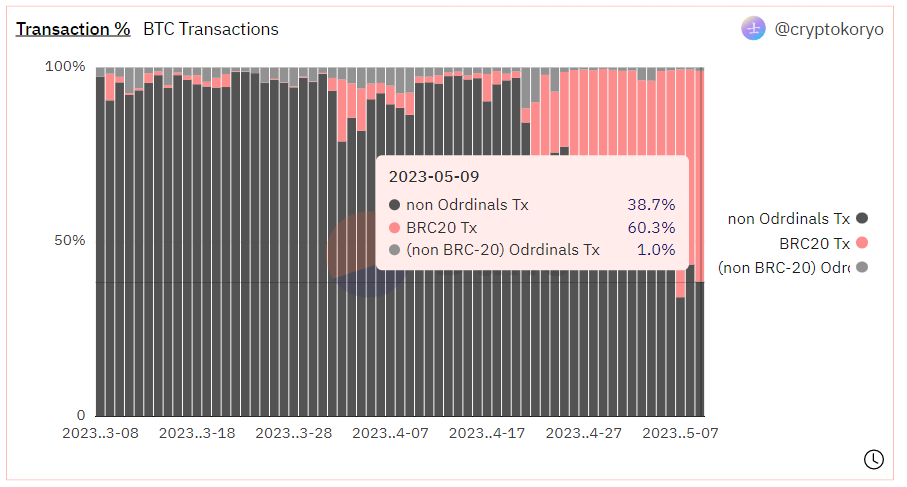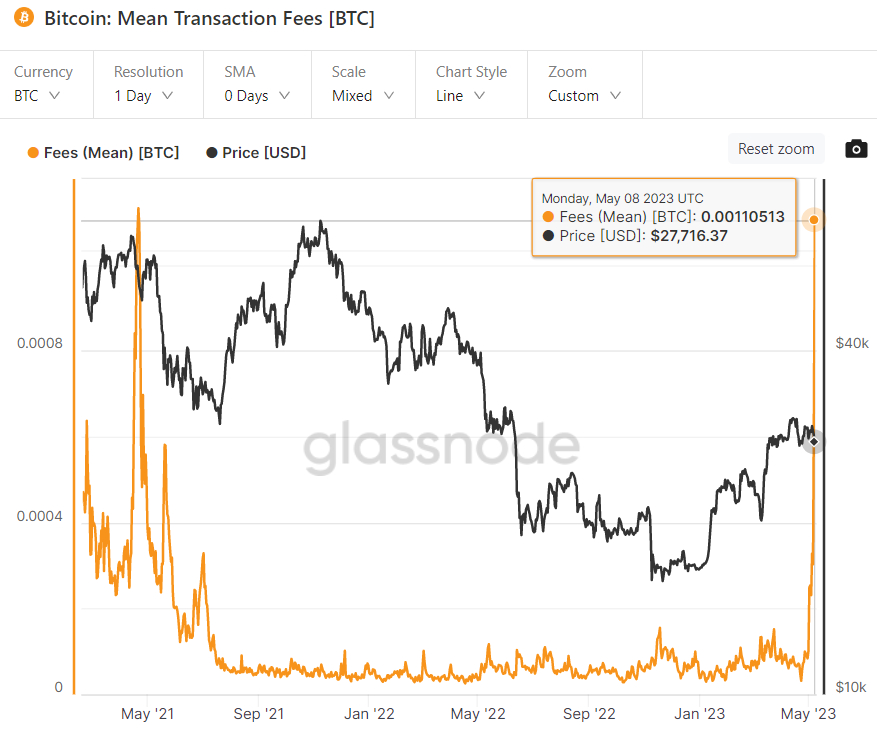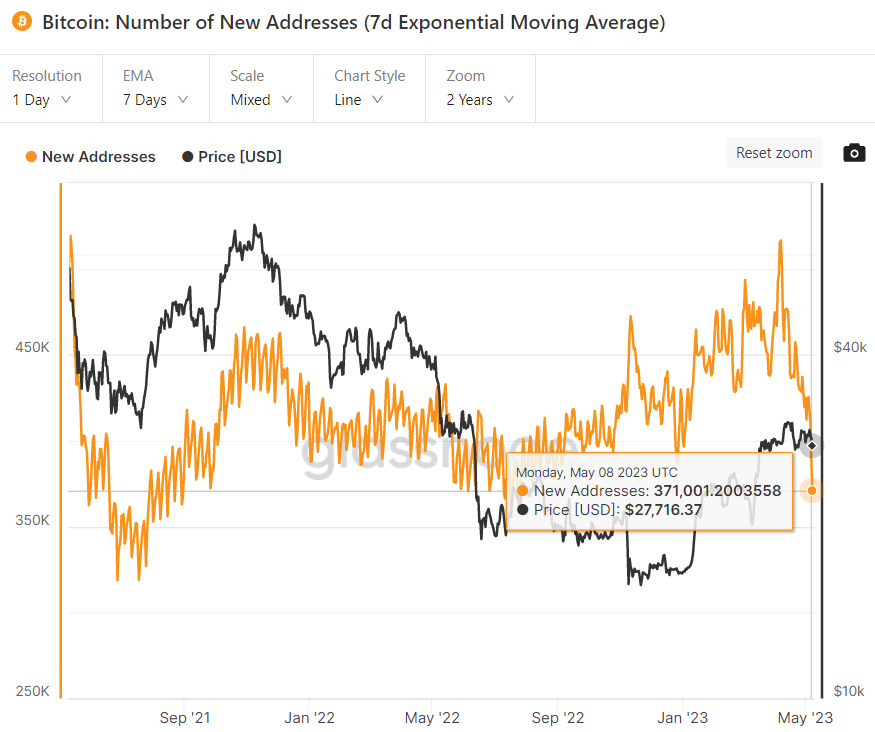Bitcoin Network in Flux as BRC-20 Craze Sends Transaction Fees Towards Multi-Year Highs – What Next for BTC Price?

The Bitcoin network is in flux amid a surge in the popularity of BRC-20 tokens, a new Bitcoin blockchain-based fungible token standard inspired by the Ethereum blockchain’s ecosystem of ERC-20 tokens.
The BRC-20 standard, which was developed and deployed by a pseudonymous Twitter user by the name of Domo only just over one month ago, uses the Bitcoin-based Ordinals protocol and inscriptions to manage token contracts, token minting and token transfers.
The Ordinals protocol, launched late last year, is an innovative numbering system for every Satoshi in existence (each BTC has 21 million Satoshis), while an “inscription” is when a layer of data is added on top of a Satoshi.
Despite being only one month old, the BRC-20 is already dominating the Bitcoin blockchain.
According to a dashboard created by Dune to monitor the new standard and its growth, BRC-20 tokens accounted for over 60% of all transaction activity on the Bitcoin blockchain on Tuesday, whilst paying 42.8% of all fees.

And the surge in BRC-20-related activity has gone hand-in-hand with a surge in overall Bitcoin transactions and an exponential surge in Bitcoin transaction fees.
According to Glassnode data, daily Bitcoin network transactions hit a record high on Monday of over 543,000.

The BTC-denominated mean transaction fee, meanwhile, approached a three-year high and, on Monday, was just over 0.0011 BTC.
That’s over $30, just for one Bitcoin transaction.

Bitcoin Network Fundamentals Taking a Hit?
The surge in interest in BRC-20 tokens and the associated spike in network transaction fees is not coming without a cost.
While daily transaction numbers are up, other metrics of network activity are taking a hit.
The number of active addresses interacting with the network on a daily basis recently neared a two-year low.

Meanwhile, the number of new addresses interacting is approaching its lowest level of 2022.

Higher transaction fees are clearly dampening the demand from new and existing Bitcoin network users, as would be expected.
However, the surge in fees is a boon for Bitcoin miners.
Miners typically rely upon the issuance of new Bitcoin (which currently occurs at a rate of 6.25 BTC per block – which is roughly every 10 minutes) to fund their activities.
Transaction fees typically make up a very small portion of miner income.
But the Bitcoin Fee Ratio Multiple (which equals Bitcoin miner income coming from new BTC issuance divided by Bitcoin miner income coming from transaction fees) has been falling sharpy in recent days.
As of Monday, it was around 2.34, down from a mid-April high of above 68.

A stronger miner network arguably means a more secure, robust Bitcoin network, which should be a positive in the long run.
What Next for the BTC Price?
Last year’s deployment of the Ordinals protocol on the Bitcoin blockchain and the more recent surge in popularity of the BRC-20 token standard represents a big shift perception of the Bitcoin blockchain’s potential uses.
Having previously been viewed as an undynamic crypto blockchain that functions purely as the ledger for a digital currency, recent innovations could push the Bitcoin blockchain towards being viewed as something more akin to a smart-contract-enabled chain.
Whether this transforms Bitcoin’s fundamental value proposition away from being “digital gold” in the long run remains to be seen.
In the short term, the transaction fee spike and associated events such as Binance’s double halt of Bitcoin withdrawals over the weekend seem to have weighed on Bitcoin sentiment.
BTC was last changing hands under its 50DMA in the mid-$27,000s and close to last month’s lows.
The loss of near-term technical momentum has some predicting that Bitcoin will retest key support in the mid-$25,000s in the coming days and weeks, assuming it also drops below support around the $26,500-$27,000 area.

But upcoming macro risk events could lift sentiment and send Bitcoin back towards $30,000 – US inflation data out tomorrow and Thursday, if weaker than expected, could push crypto prices up as a result of further bets on Fed rate cuts in the second half of this year.




